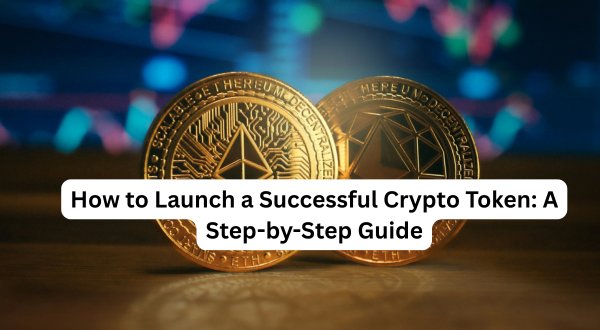Cryptocurrencies have evolved from a niche interest into a global financial phenomenon. One of the most empowering aspects of blockchain technology is that anyone can create their own crypto token. But launching a token isn’t just about writing code — it’s about building trust, utility, and community.
If you’re looking to launch a successful crypto token, this guide walks you through the process from concept to market.
Step 1: Define Your Purpose
Before writing a single line of code, ask yourself:
- What problem does your token solve?
- Is it utility, governance, or asset-backed?
- Who is your target audience?
Tip: Tokens with clear use cases — like powering a platform, enabling voting, or facilitating payments — tend to attract more attention and investment.
Step 2: Choose the Right Blockchain
Your choice of blockchain impacts cost, security, and user adoption. Here are popular options:
- Ethereum – Most widely used (ERC-20 standard), but high gas fees.
- Binance Smart Chain (BSC) – Lower fees, fast transactions.
- Solana, Polygon, Avalanche – Known for scalability and speed.
Pick a chain that aligns with your project’s goals and user base.
Step 3: Create the Token
You don’t need to start from scratch. Use open-source templates like OpenZeppelin’s ERC-20 smart contracts.
Key Token Parameters:
- Name & Symbol (e.g., “Nyash Token”, NYSH)
- Total Supply (e.g., 1,000,000 tokens)
- Decimals (usually 18)
- Minting/Burning rules
- Ownership or Governance logic
If you’re not a developer, hire a blockchain engineer or use a token creation tool like Remix, Moralis, or CoinTool.
Step 4: Audit the Smart Contract
Security is non-negotiable. A small flaw can be exploited and damage your reputation.
Hire a reputable firm (like Certik, Hacken, or ConsenSys Diligence) to audit your code.
Step 5: Create a Whitepaper and Roadmap
Your whitepaper should explain:
- What your project is about
- The tokenomics (supply, distribution, utility)
- Your team and partners
- Milestones and timelines
Be transparent — credibility is key in crypto.
Step 6: Launch Marketing and Build Community
No one will buy your token unless they believe in it.
Use These Channels:
- Twitter/X & Telegram – For announcements and engagement
- Discord – For building a dedicated community
- Medium/Substack – For technical updates and thought leadership
- Reddit, YouTube, TikTok – For education and exposure
Run a pre-sale, airdrop, or bounty campaign to reward early supporters.
Step 7: List Your Token on Exchanges
Start with decentralized exchanges (DEXs) like:
- Uniswap (Ethereum)
- PancakeSwap (BSC)
- Raydium (Solana)
Eventually aim for centralized exchanges (CEXs) like CoinMarketCap, CoinGecko, and Binance for better visibility.
Ensure your token has liquidity pools so users can trade easily.
Step 8: Maintain Momentum
After launch, continue to:
- Ship updates and hit roadmap goals
- Foster community governance and feedback
- Launch new features or utilities (e.g., staking, governance voting)
Consistency builds trust, and trust builds value.
Final Thoughts
Creating a crypto token is easier than ever — but launching a successful one requires strategy, transparency, and continuous engagement. The most successful tokens are not just code — they are ecosystems with vision and purpose.
Whether you’re creating a payment token, governance token, or the next viral meme coin, do it with integrity and a clear mission.
 UBUCH ubuch | Honest Tech Reviews & Tutorials for Everyone
UBUCH ubuch | Honest Tech Reviews & Tutorials for Everyone




